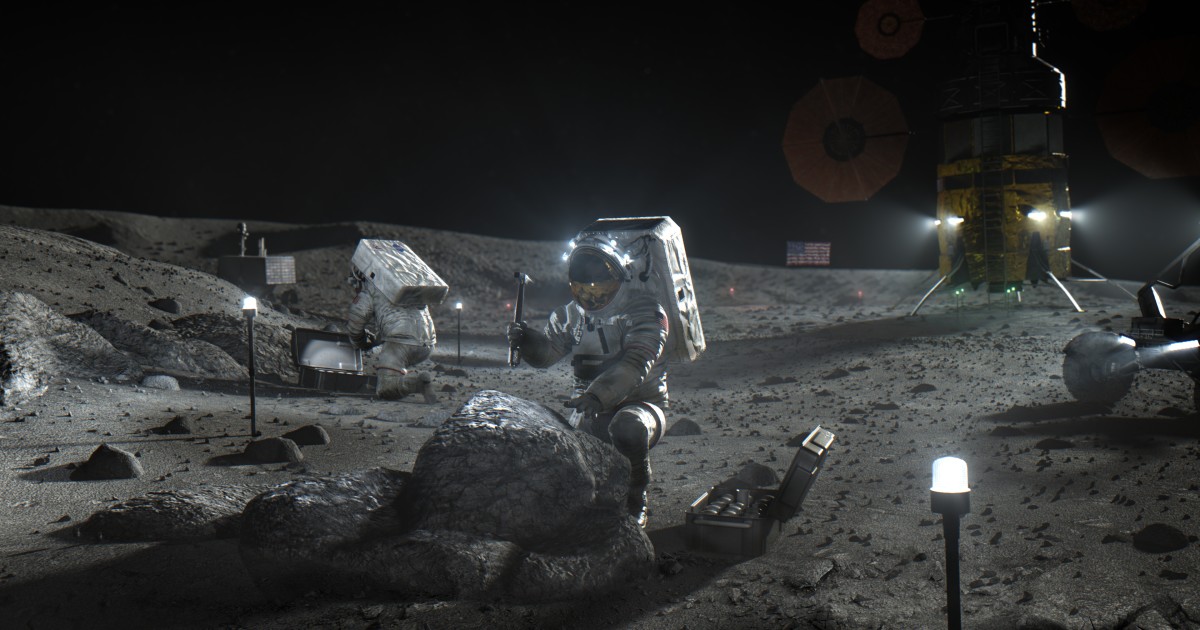https://habr.com/en/company/top3dshop/blog/501794/- Top 3D Shop corporate blog
- 3D printers

The USA's National Aeronautics and Space Administration (NASA) has chosen three private companies to participate in the development of landing modules for the new Artemis lunar program. Among them are two enterprises that widely use 3D printing technologies in the production of rocket engines — Jeff Bezos' Blue Origin and Elon Musk's SpaceX. NASA seems to approach the matter carefully and generously, financing the development of lunar manned vehicles in three competing directions at once.

The Blue Origin private space company owned by billionaire and Amazon founder Jeff Bezos is to develop the three-stage ILV (Integrated Lander Vehicle) to be launched on either promising New Glenn proprietary rocket systems or Vulcan launchers developed by the United Launch Alliance (Boeing and Lockheed Martin). The latter should replace the currently used Atlas V system. Instead of Russian RD-180 engines, they will use BE-4 power units by Blue Origin. Lockheed Martin, Northrop Grumman, and Draper will take part in the Blue Origin lunar module project.

SpaceX presented the Starship project — a Mars-colonizing rocket undergoing preliminary and still problematic tests. Two prototypes have already been lost during the ground testing, but the company does not give up. Strictly speaking, the Starship project is primarily focused on the exploration of Mars; however, the SpaceX program provides for the use of this system for lunar expeditions as well, and in the long term for flights to Mars from the Moon.

The third participant will be the Alabama-based company Dynetics, part of the Leidos corporation. The company is engaged in various developments in the field of aviation, space, automotive industry, information technologies, and cybersecurity, also entering into contracts with NASA, the US Department of Defense, and the Central Intelligence Agency. Dynetics is going to offer DHLS (the Dynetics Human Landing System) along with the ULA Vulcan launchers mentioned above.

At least two participants — SpaceX and Blue Origin — make extensive use of additive technologies, which is not unusual, considering the
capabilities of metal 3D printing. SpaceX can be considered a pioneer in terms of “space” additive manufacturing: 3D printed parts are used in the design of engines for both the Crew Dragon manned spacecraft being tested and Dragon cargo landers/Falcon launch vehicles that are already in operation.

Blue Origin, for its part, enters the race with two power units employing 3D printed components. It is planned to use the «almost completely 3D printed» BE-7 engine in the lunar module undergoing tests at the George C. Marshall Space Flight Center; BE-4 engines will be installed in Vulcan rockets. Vulcan launch vehicles will replace Atlas V systems and will not use Russian components. So, BE-4 engines should displace RD-180 produced by NPO Energomash from the American market. This February, Blue Origin opened a new factory in Alabama, investing in the project at least two hundred million dollars. The company is supposed to produce several dozen rocket engines per year.
The total amount of contracts for the development of lunar landers is $967 million. The participants are to present their results in ten months, after which NASA will choose whose design will be used in the first Moon expeditions under the Artemis program. The exact date of the first flight has not yet been determined, but NASA plans to return to Earth’s satellite before 2024.





